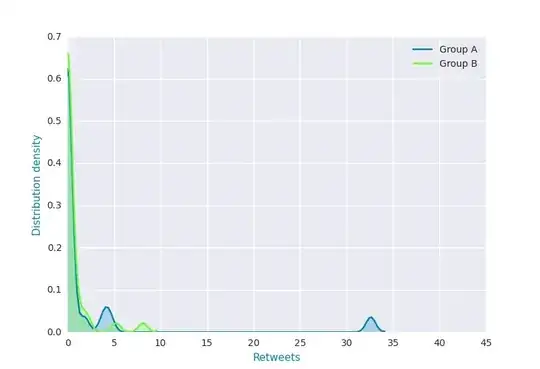I am a stats-beginner, Using pandas I am analysing a small dataset. There are 60 data-points, 22 of which are from Group A and 38 are from Group B. The dataset is made up of the number of retweets gained by a single tweet. The Null Hypothesis is that a tweet in Group A is not more likely (<=) than one in Group B to be retweeted.
Because most tweets are not retweeted the majority of data-points are zero. This leads to a distribution that looks like this (using seaborn):
As this is a far from normal distribution, it wouldn't be appropriate to use a t-test, nor do I have any expectations regarding how many retweets each tweet should get, so I cant use Chi-Squared.
Please would you give me some hints as to what would be an intelligent, beginner-friendly (and statistically robust way) to conduct a hypothesis test on this data?
